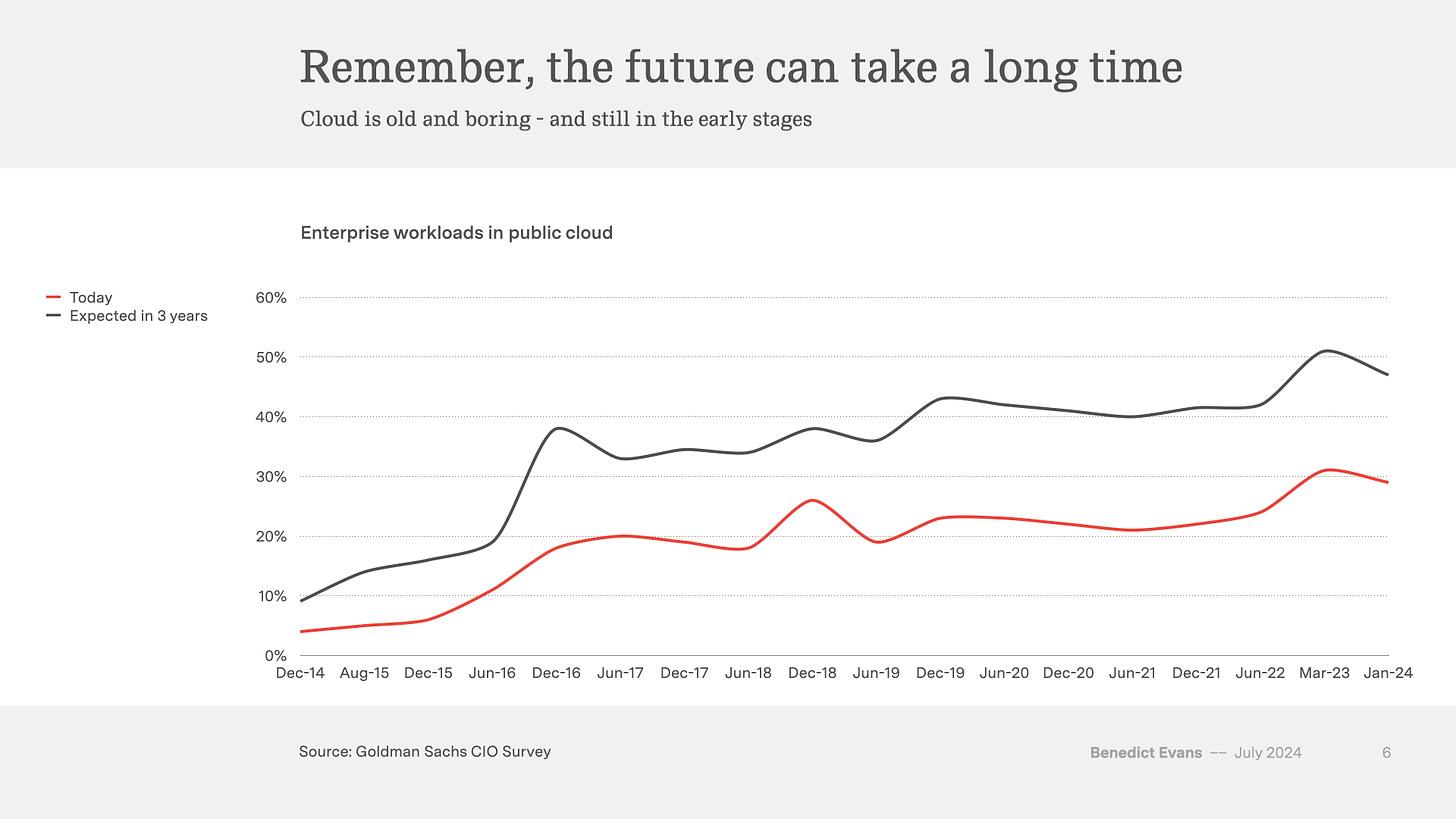I don’t know. I’ve been trying to sort out what platform engineering is for awhile.1 It matters a lot for my job! While I haven’t verified it, it seems like it started as a marketing campaign from Humanitec and then took on a life of its own. Now the likes of Gartner have practice areas for it and are hiring analysts to cover it.
This means that people in enterprises are trying to sort out what to do about platform engineering. Surely they need it! The category is now loaded with everything, pulling in the all the stuff, including internal developer portals, CI/CD (I don’t think people [read: vendors] explicitly discuss foundational practices like build automation anymore, but I suspect actually putting CI/CD in place is the primary driver of the benefits people get with platform projects), getting Kubernetes to work, and all the usual cloud native platform stuff.
That is, what platform engineering is has become too expansive and is, ironically, driving too much cognitive load. Here’s my simplification:
And if you don’t have 2 minutes and 36 seconds to spare, here’s a shorter version.
Wastebook
“the AI-infused journey” Gartner.
“Audience Acquisition Rep II”
Relative to your interests
The AI summer - Several charts of technology adoption, including the Goldman chart that shows CIO’s intentions to move workloads to public cloud is always high, and not well executed. // Un-clickable citations, though.
Gartner Survey Finds 64% of Customers Would Prefer That Companies Didn’t Use AI For Customer Service - “Many customers fear that GenAI will simply become another obstacle between them and an agent. The onus is on service and support leaders to show customers that AI can streamline the service experience.” // I mean, that’s the point right: otherwise “productivity” wouldn’t improve. The hope is that the AI things are better at solving problems. The problem is that you usually need a human to actually change things, make things happen, and deal with exceptions. Otherwise, you get stuck on an accountability sink.
DevRel’s Death as Zero Interest Rate Phenomenon - A list of how to show marketing value. // This whole time all the devrel people just needed to integrate into the finally tuned, perfectly functioning, incredibly accurate, much beloved, and simply existent customer journey management CRMs out there. Also, they should have been listening to all the feedback the sales people gave them about how their activities helped close deals and clamp down churn. And if they had just engaged with the product people who were eager to work with them! Instead, just think of all the money that was wasted on teal-haired people’s sticker collection? // But, yeah. Yes, and: You can definitely always focus on selling the product more.
Jevons paradox - When you automate something very valuable (or just “costly”), people demand more, and more complex product. This pulls in more need for labor that can do the more complex work. Hopefully.
Logoff
This is a bit of a weird recording since there’s no slides (“technical difficulties”), but if you want to see the second version of my “Why We Fear Change” talk, here it is, from SCaLE 21x. The first time I gave it (at cfgmgmtcamp) I ran out of time because I’d packed some of my Business Bullshit words in as interludes for fun.
//
I’ve been hunting down “private cloud” usage numbers - just anything, at this point. Specifically, I want to know which in-house apps run where. I don’t care about enterprise applications like ERP systems, nor SaaS apps: just the applications that organizations code and run themselves.
There’s not that many out there in the easy to find, free surveys. Essentially, what you see is that something like 70% to 80% of people use multiple clouds - various public ones, on-premises, “private cloud,” etc.
There’s this from Slides Benedict:
If you read this chart, you’d say “something like 25% to 30% of ‘enterprise workloads’ are running in public cloud. This, 70% to 75% of apps are running on-premises.” Does that seem right? If it is, the lack of conversation around on-premises is bizarre. That’s the majority of IT and movement away from it is very slow.
But, it’s hard to have confidence in such a contrary statement because I can’t find the surveys cited to make sure (a) I focus just on apps, not SaaS, etc., and , (b) I’m reading it right, the geographies and industries/demographics (is it 100 F500 CIOs, or just rando’s who answered a survey online?), etc.
In large organizations, this isn’t too much of an insight: they’re so long, so long lived, have so many geographic groups that have their own IT stack, not to mention both centralized/planned IT and YOLO line of business IT, and have acquired so many companies…that of course they have everything. What I’m more interested in are how many apps are in the public2 cloud versus not.
I just got a pile of recommendations from people, so perhaps I’ll have more to report back.
Here’s an unpublished video I did a few weeks ago thinking through it. It was too jumpy, and more of a draft.
No one really says public cloud anymore, just cloud. This is another sign of how little attention is put on private cloud, on-premises.

